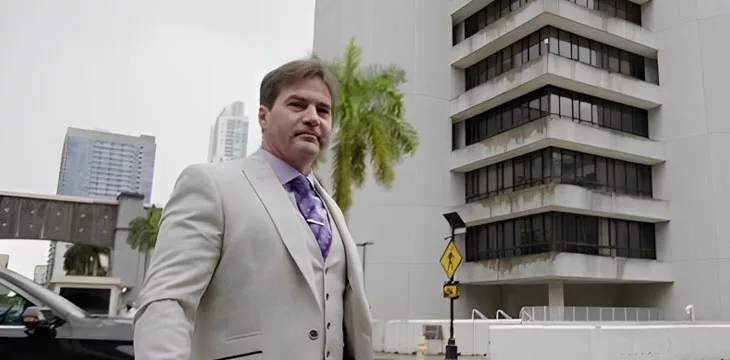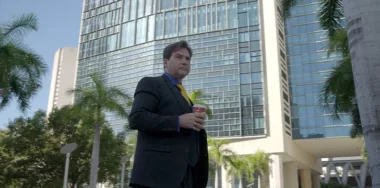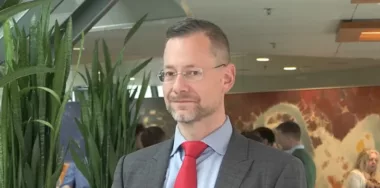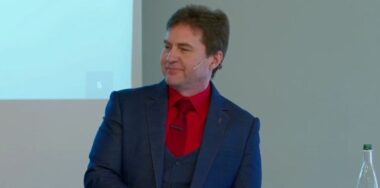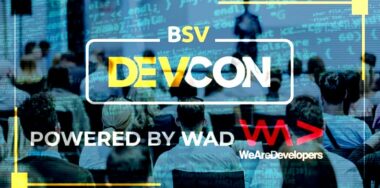This post originally appeared on ZeMing M. Gao’s website, and we republished with permission from the author. Read the full piece here.
The trial of COPA v. Wright is set to start in mid-January 2024.
The case has a unique significance. For the first time, the central issue of a lawsuit involving Dr. Craig S. Wright is the truth itself (Satoshi’s identity), rather than derivative matters such as property rights and defamation.
COPA (Crypto Open Patent Alliance), a coalition of some of the most powerful companies in Silicon Valley, wants the court to declare that Dr. Wright is not Satoshi.
COPA focuses on negative evidence showing incidences where they believe Dr. Wright failed to prove he is Satoshi. Dr. Wright is expected to present positive evidence that he is indeed Satoshi.
The trial has not started, so one should not reach any conclusion about this case.
However, knowing that they can’t positively prove a negative, COPA focuses on a psychological diversion by painting this picture:
Wright has behaved so badly that he can’t possibly be the Satoshi the world wants.
To achieve that, COPA will craft arguments to cause the following confusion:
- They will try to subtly equate an act by Wright as Satoshi to an act by Wright to prove he is Satoshi.
- They will further try to trick the court into concluding that Wright’s failure to prove he is Satoshi using a specific piece of evidence means COPA’s success in proving Wright is not Satoshi.
The case is, of course, not pleaded and set up that way explicitly. COPA asks the court to declare that Craig Wright is not Satoshi who created Bitcoin. But, their experienced trial lawyers know it’s hard to prove a negative. It is much easier to paint a picture of Wright being such a dishonest person that he can’t possibly be Satoshi. But as a practical matter of litigation logic, they will need to cause the above-described confusion to achieve that goal.
Therefore, I’d like to say outright that the key in COPA v. Wright is whether Dr. Wright’s team can help the judge avoid the above confusion. Of course, many will say that the ‘key’ is the private key Craig holds for the Satoshi coins, but that’s a separate matter.
COPA’s particulars of claim (POC)
The entire case of COPA is based on alleging that Dr. Wright has had various opportunities, and made various attempts, to prove his claim to be the author but on each occasion has failed to do so, and therefore he is not Satoshi.
In the particulars of claim (POC), COPA alleges four specific occasions:
- the ‘Sartre message’;
- the ‘BlackNet Abstract’;
- the ’12 March 2008 Kleiman email’; and
- the ‘SSRN Submission’.
Please see Judge’s pretrial decision for details of these pleadings.
However, through the pretrial disputes and decisions, it became evident the key issue of the trial is whether COPA, the plaintiff, can successfully confuse the defendant and the judge in the two distinctions made above.
Specifically, COPA will need to focus on Dr. Wright’s historical acts as Satoshi, find any questionable elements in those acts, and confuse those questionable elements with Dr. Wright’s failure to prove his Satoshi identity, and further confuse such failure with COPA’s success in disproving Wright’s Satoshi identity.
Let’s look more at COPA’s case:
The COPA strategy
In more general terms, COPA’s trial strategy is to create an appearance of Dr. Wright’s culpability of a scandalous nature (such as fraud or deception) and then use it to discredit or impeach him and his evidence.
To that end, COPA will need to:
(1) cause the court to confound ‘an act by a person as an identity‘ with ‘an act by the person to prove the identity‘; and
(2) further cause the court to confound ‘defect in a specific piece of evidence to prove the identity‘ with ‘sufficiency in disproving the identity‘.
The above two must work in tandem.
Concerning the above #1, when a person naturally acts as himself (with an identity as a matter of fact), even if he commits a misrepresentation in what he does and says (note, in Dr. Wright’s case, he will offer rebuttals to explain there was no misrepresentation in the first place, but that’s a different defense and not the point here), there is no specific deception no intent of deception designed to falsely prove his identity. The person is not acting to prove his identity but rather acting as the identity (his own self-aware identity). Any error or misrepresentation (if any) in his act has its own character but is not an identity fraud. This is especially true when the person has other evidence of equal or higher quality to prove his identity.
However, if the above distinction #1 is confounded, an intent to deceive, more specifically that of identity fraud, is unfairly created and imputed to the person (Dr. Wright in this case) when he did not have such intent at all.
Concerning the above distinction #2, it is common knowledge in logic that a defect in one piece of evidence to prove a positive is not equal to sufficient proof of a negative. Again, this is especially true when there is other evidence to prove the positive. Confounding this distinction also relates to imputing culpability. The goal is to impeach (discredit) a witness.
But in the COPA case, Dr. Craig isn’t merely a witness who testifies but the very identity in question. Many pieces of evidence might come from or at least relate to Dr. Wright, but their credibility does not wholly rely on Dr. Wright himself as a witness. For example, if Dr. Wright presents a credit card payment record that can be verified by a bank record, the credibility of that evidence is in the thing itself.
COPA’s goal therefore must be broader, which is to impeach Dr. Wright the person and all his evidence. COPA’s tactics will be imputing falsehood to all evidence by way of imputing culpability of a scandalous nature extracted from a specific piece of evidence.
For this purpose, COPA’s POC included four separate occasions. COPA will need to extract the necessary culpability from these four occasions and impute it to Dr. Wright and all his other evidence.
Although the case is complex and involves large volumes of documents and other evidence, COPA must rely on a quite simple strategy. COPA will need to extract culpability of a scandalous nature from Dr. Wright’s acts and impute it into all evidence presented by Dr. Wright now. It is a strategy of a poison pill, the potency of which is mostly psychological rather than logical.
There’s no other way to prove a negative.
It’s not going to be easy for COPA, but they don’t have a choice. The stakes are too high (see below). COPA will spend an unlimited amount to hire the best lawyers in order to achieve its goal.
The flaw of the COPA strategy
However, of the four occasions pleaded by COPA, only one (‘Kleiman email’) was arguably a special act by Dr. Wright to prove he is Satoshi. All three others, namely the ‘Sartre message’, the ‘BlackNet Abstract’, and the ‘SSRN Submission’, were just normal acts by Dr. Wright, being himself, as Satoshi. They were not special acts to prove his Satoshi identity. These two types are of different nature and must be treated differently.
Because the normal acts by Dr. Wright as Satoshi were not meant as active and positive proof that he was Satoshi, it is illogical to analyze and present those acts as if a defect in such acts could serve as negative proof that he is not Satoshi.
Let me use the following hypothetical story to illustrate this:
Oz has a piece of land, which he, for a period, has not properly attended to.
Tor takes advantage and occupies the land.
Oz later took notice and, on several occasions, stated publicly that he was a true owner of the land and gave notice to Tor.
But while being the owner and acting as such, Oz told others stories of how he acquired the land in the first place and what he did on the land.
Tor goes to the court to sue Oz and asks the court to declare that Oz is not the true owner because some parts of the stories Oz told people are questionable. Tor presents evidence to the court that the dates in those stories told by Oz are wrong, some parts are untrue or inconsistent, and so on.
In response, Oz presents to the court a large amount of evidence and witnesses to show that he is indeed the owner of the land – all positively intended to prove his ownership in the court.
He once had the official title of the land, but says he has somehow lost it.
That’s the case of Tor v. Oz before the judge. If Oz could now find his official title paper of the land, it would become a very simple case. But let’s assume that Oz couldn’t produce the official title paper.
Now, if you were the judge, how would you decide? Will you focus on the actual evidence Oz presents that proves he’s the owner, or will you focus on Tor’s allegations that Oz previously told lies?
The COPA v. Wright trial essentially presents such a drama.
The case depends on whether Dr. Wright’s team can help the judge avoid the above-described confusion.
In three of the four incidences alleged by COPA, namely the ‘Sartre message’, the ‘BlackNet Abstract’, and the ‘SSRN Submission’, Dr. Wright was simply acting as Satoshi, rather than trying to prove that he is Satoshi positively. Whether or not the ‘stories’ contained in Dr. Wright’s past acts are questionable has little to do with whether he really is Satoshi or not, because those were not acts intended to prove that he was Satoshi. His entire case is based on the evidence he now presents to the court to prove that he is Satoshi.
Therefore, the court’s focus should be the actual evidence Dr. Wright submits intending to prove that he is Satoshi, not on questionable elements in those incidents in which he just acted as Satoshi. This doesn’t leave much room for COPA to maneuver.
‘Kleiman email’ is a different kind
However, of the four COPA allegations, the ‘Kleiman email’ is of a different nature, because it was submitted in a previous court proceeding as part of evidence to prove that Dr. Wright is Satoshi. Therefore, its authenticity has relevance in the case COPA tries to make. COPA alleges that the email was fake. Dr. Wright may either rebut COPA’s allegation by explaining the apparent discrepancies on a technical ground or admit it was not genuine and withdraw it from the evidence.
If Dr. Wright fails to rebut COPA’s allegation and establish the email’s credibility, it would be a failed piece of evidence. But it is only one piece among many pieces of evidence, the rest of which Dr. Wright can still rely upon.
However, COPA’s strategy is not merely to impeach that particular piece of evidence but to use it to impeach Dr. Wright himself. If COPA could further establish that Dr. Wright himself created and knowingly submitted a fake email as evidence (note this is a different matter from the authenticity of the email itself), it could have an impeaching effect on Dr. Wright’s credibility. This would carry far more weight than a merely untrustworthy piece of evidence.
But even then, it is not dispositive. It is just one of many pieces of evidence presented for the court to weigh and decide.
One should also be mindful that the court’s responsibility in this case is not to decide Satoshi’s character but rather if Dr. Wright is Satoshi.
The totality of evidence
Dr. Wright’s team recently conducted a mock trial focusing on cross-examining him about the ‘fake evidence’ he submitted in the past, as alleged by COPA. The result was alarming, if not disheartening. It caused some misunderstanding and overreaction due to the fact that the mock trial focused on the above-discussed several pieces of adversarial evidence laid out in COPA’s particulars of claims (POC), instead of the bulk of the evidence Dr. Wright is presenting to the court for the upcoming trial.
Such a narrow focus of the mock trial is not an error, because that is where the challenges are. However, estimating the outcome of the case based on an impression of such a mock trial likely exaggerates the risk of losing the case.
In the real trial, the court must consider evidence in its totality.
In a case where multiple pieces of evidence are presented, and some pieces are inconsistent with the rest of the evidence, the most scientific way to assess the truth is using an objective mathematical method such as Bayesian probability estimate (see Mathematical proof that Dr. Craig S. Wright is Satoshi Nakamoto). But I doubt the court is going to take a real mathematical approach.
Regardless, however, if the judge is objective, his mind will actually perform an approximate Bayesian probability estimate anyway, whether he is conscious of doing that or not. That is how the human mind is designed to exercise judgment naturally, if not distracted, deceived, or perverted.
Stakes and prospects
The COPA case has consequences for BSV. If COPA wins the case, many developers, entrepreneurs, and investors may be discouraged and dissuaded from BSV development. Those who have a true conviction of the technology and Satoshi’s vision will still stay, but the ecosystem as a whole will be weakened due to the negative impact on what developers, entrepreneurs, and real investors might think of BSV. Unlike coin-price speculators whose sentiment is of no long-term significance, these people’s outlook matters.
On the other hand, BSV already finds itself in a world that holds a prejudicial judgment against it. People outside BSV believe Dr. Wright is part of a conspiracy to steal Satoshi’s coins and technology. It is a hideous and cynical charge, a baseless imaginary belief created by social engineering, and is proven false from all angles (see the more recent revelations in There is no Satoshi conspiracy in Bitcoin SV). But it has nonetheless been the dominating environment in which BSV has been operating. Therefore, a court judgment against Dr. Wright probably cannot make BSV’s environment much worse than it already is.
As a system and a movement, the genuine Bitcoin (BSV) can succeed without Dr. Wright being rightfully recognized as Satoshi. A name has its value, but the substance is of a greater value, which is in the man himself and the actual work he has done and continues to do.
More importantly, the foundation has already been laid, and the development of the real Bitcoin will not stop, regardless of the status and further involvement of Dr. Wright.
Put another way, Dr. Wright’s legal fights are one thing, nChain is another, and the BSV ecosystem is yet another. The system works. Participation is open. Developers, entrepreneurs, and investors can freely use the system to develop their own solutions for their own benefit, whether they love Dr. Wright or hate him, admire him or despise him.
In comparison, COPA’s stakes in this case are much higher.
(1) In the long term, it may be an existential threat to the establishment represented by COPA companies if Dr. Wright wins. The genuine Bitcoin according to Satoshi’s vision threatens Silicon Valley’s control of the centralized Internet as it presently is. Their siloed and unscalable crypto vision of the Internet will not be competitive with the universal and scalable New Internet according to the Satoshi Vision. The business model of the entire information industry will have a paradigm shift from a centralized monopoly model to a decentralized human capital model.
(2) Dr. Wright being recognized as Satoshi would not only mean BSV is the genuine Bitcoin, but also that the crypto industry’s champion project BTC loses its legitimacy as it is not the real Bitcoin. The stake is far greater than mere identity, but also about property rights. Dr. Wright as Satoshi would have property rights over much of the BTC database, including both the database content and file format, which are the subject of another related lawsuit depending on the outcome of the COPA case. This has consequences that COPA companies cannot accept.
(3) With the genuine Bitcoin blockchain’s major architectural and value propositions as a universal base layer blockchain for the New Internet validated, other blockchains, along with their crypto assets, lose value. All other applications that are not already built on the Bitcoin blockchain (BSV) will need to migrate over to BSV. This means an end to the scam-infested cryptoverse as it is now, but ushers in a new IoV (Internet of Value) with a utility-based blockchain sphere.
And more. See my upcoming book “Bit & Coin – Merging Digitality and Physicality”
Anticipations
I am not waiting for the trial result to convince me one way or another. The evidence supporting Dr. Wright is so strong and clear that the trial is also a test for the court itself. (See Mathematical Proof that Dr. Craig S. Wright is Satoshi Nakamoto.)
But that does not mean I am certain of what the actual outcome will be, or that I don’t care about the result.
Who is more likely to win the case? I say Dr. Wright. Being on the truth side does have an advantage. Based on the available evidence, Dr. Wright should win; and with competent representation and a judge who is objective, unbiased, and not confused, Dr. Wright will win. Meanwhile, facing the inherent difficulty of proving a negative, COPA has some hard hoops to jump.
But COPA is making a titanic effort due to the high stakes. Spending many millions on the best lawyers can sometimes achieve surprising results. It is nothing to be sniffed at.
I am optimistic about Dr. Wright’s case but prepared to be surprised.
Watch: Bitcoin white paper – 15 years on, the significant landmark but what does it mean?
New to blockchain? Check out CoinGeek’s Blockchain for Beginners section, the ultimate resource guide to learn more about blockchain technology.

